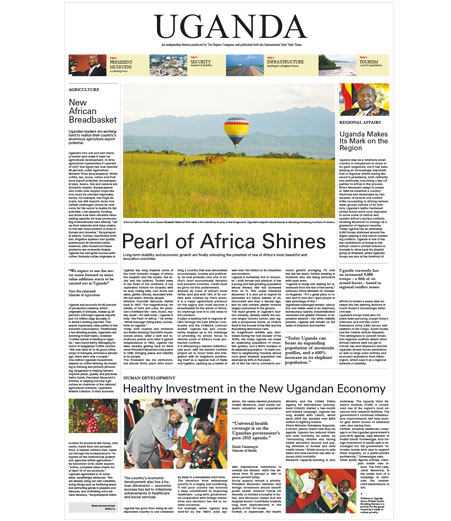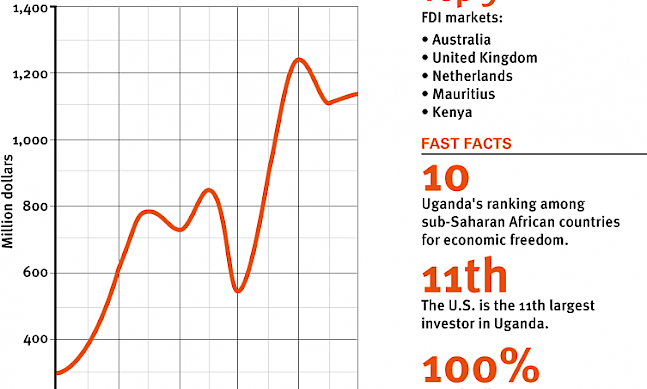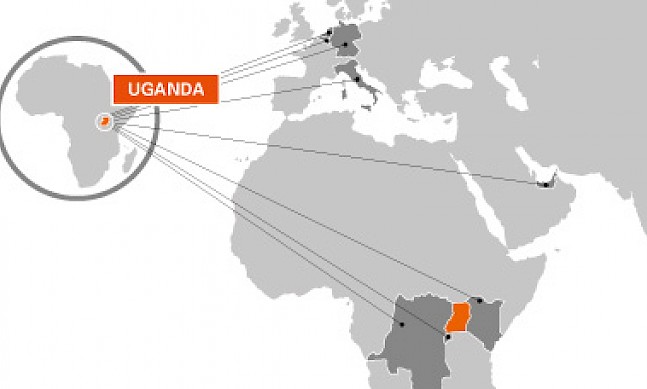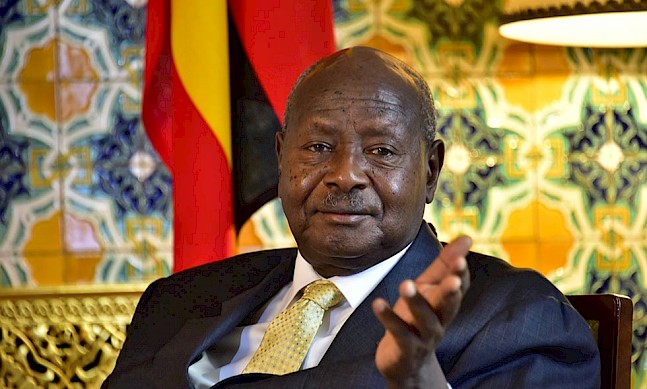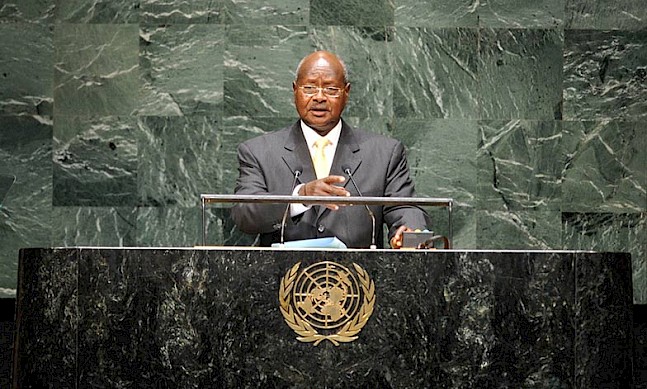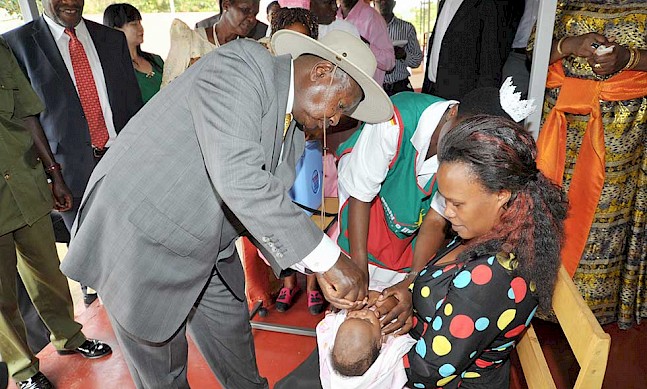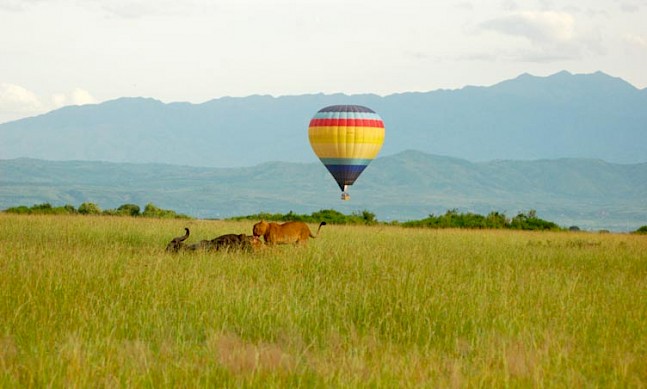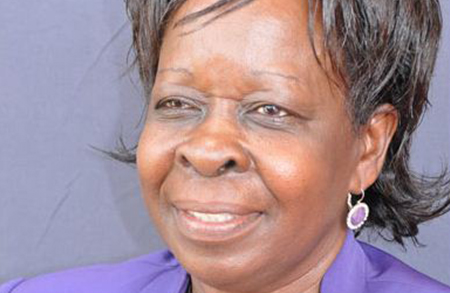
With $2 billion in projected annual earnings from the sector, tourism has become a key focus for the Ugandan government. The tourism ministry, under the leadership of Maria Mutagambwa, is identifying new niches and working to boost visitors to the country’s stunning natural parks, although the minister points out that it is Uganda’s people who are its biggest asset. The Report Company met with her to find out more.
The Report Company: How would you appraise Uganda’s tourism offering?
Maria Mutagambwa: Uganda is the Pearl of Africa, as described by Winston Churchill because of its environment. The weather is beautiful, the temperatures are good, the people are friendly and it is always green. In fact, when Churchill came here he called it one glorious golf course.
Uganda is like a saucer. We’ve got mountains to the west and mountains to the east, then we have lakes, rivers, forests, hills and valleys. Some call it the cradle of mankind. We also have unique wildlife. People talk about the Big Five animals, but we have the Big Seven: elephants, lions, giraffes, hippos, leopards, mountain gorillas and chimpanzees. Uganda has the biggest number of mountain gorillas in the world. The current world population is about 805, although there is a census coming up which we hope will show that numbers have grown to 1,000. We have more than 54 percent of that population. We also have tree climbing lions, which are only found in Uganda. Then we have our people. Our people are the greatest asset and greatest resource. They are so friendly that when you come to Uganda you feel like you have already lived here for many years.
TRC: Where does this friendliness come from?
MM: The friendliness comes from the environment. The environment is not hostile, so people don’t feel stressed. They have grown up with plentiful resources so they have plenty to give. That is the kind of life we have lived and we bring up our children with this welcoming attitude. That is what makes us friendly: our environment and also having plenty around us.
TRC: What contribution does tourism have to the Ugandan economy?
MM: Right now the tourism industry is the fastest growing. It is growing at an exponential rate of about 21-25 percent and we see the potential of further growth because most of the resources are untapped and a lot more products can be created.
At the moment we are contributing nine percent of GDP and that puts us in second position, after trade and industry. We think that with the kind of commitment and interest that we have generated both in government and the private sector, the tourism industry can actually become the number one contributor. We believe that by 2020, tourism should be able to contribute about 15 percent of GDP. That is our target.
In terms of creating employment, we know that for every tourist that comes to this country we can create a job. The Ugandan government has provided a lot of free education, and the next step should be employment. The tourism industry is able to generate those jobs. Indeed, in our Vision 2040, we see tourism as being one of the areas that the government should concentrate on.
At the global level, tourism has grown very quickly. There are currently around 1.3 billion travelers. We want to increase the market share of Africa and the market share of Uganda. At the moment, Africa’s market share is about 52 million arrivals and Uganda has a share of about 1.3 million people. Our target is to add new arrivals every year.
We are also looking at domestic tourism. Apart from looking at people coming in from outside, I think we have a great potential within the country because Uganda is made up of 53 different tribes. That alone gives 53 different cultures which we need to exchange and share. If we get people moving across the country, they will learn about their country, learn about the cultures around them and appreciate them, and that will solidify our unity.
To achieve all of this, we realize that we need to put in more infrastructure. The government has put emphasis on roads so that we can have better connectivity within our country. The government is also planning to increase the connectivity for international arrivals by expanding the main airport and putting up five other small airports.
TRC: What are your main tourism target markets?
MM: The biggest market as of now is Germany, followed by the UK, then the Netherlands. We are now targeting the U.S., which is on the increase, and we are also targeting the African market, mainly South Africa, Nigeria, and our neighboring countries. Most visitors from the African continent come on business but when they come here and they appreciate the beauty then we see them come back as tourists.
We are also looking at the Middle East and we are inviting people from there to come here. There are direct flights into Uganda from many Middle Eastern airlines, such as Turkish Airlines, Emirates, Etihad and Egypt Air.
TRC: How are you diversifying your tourism offering?
MM: We are looking at different products that we can offer to attract more tourists. One of them is the MICE product: meetings, incentives, conferences and events. Because of the friendliness of our people, we think Uganda should be a destination in Africa for MICE. We made a start on this when we were preparing for the Commonwealth Heads of Government Meeting which took place in 2007. We were able to create accommodation so the bed numbers increased fast enough so that we could host international conferences.
Uganda is a land of religious people so we have decided to also promote faith-based tourism. We want to make Namugongo our Mecca. Every year we have been receiving more interest. The idea is to make Namugongo a faith-based tourism center, and the government has committed to doing this development together with the churches and mosques. The unique thing about the place is that it brings together all the faithful, be they Muslims, Catholics, or Protestant; they all have something in common there. The government has identified Namugongo as an icon of faith and we are planning to develop it further so that you can have people coming on pilgrimages to the Muslim shrine or the Christian shrine. Furthermore, we have the only Baha’i temple in Africa. We are also expecting the Pope to come here this year.
Uganda is proud of its people and its culture. We have our kings, which are a special part of our culture. Kampala could be the cultural city of Africa. Uganda is in such a position that many migrations of people them passed through the country and that is why we have such diversity of people. You even find the Israelites here, and they have maintained their culture.
“We have to make conservation our number one priority if we are going to maintain Uganda’s beauty. Conservation is enshrined within the constitution and the laws.”Tweet This
TRC: How do you balance tourism development with the need for conservation?
MM: We have to make conservation our number one priority if we are going to maintain Uganda’s beauty. Conservation is enshrined within the constitution and the laws. The constitution of 1995 had a clause mandating government to conserve the natural heritage of this country.
Conservation is a priority in everything we do. Many of our people still live from subsistence agriculture and hunting. We have got to find alternative ways of keeping them away from hunting and making sure that they have a better life. To do that, we have started community management programs where the resources that we get from national park fees are shared, with 20 percent going back to the community. We engage these people in economic activity, we give them water and schools and so on so that they are aware that this money comes from preserving the environment. They understand that the more people who come to the park, the more money they are likely to get. The communities have really appreciated this and they have become strong custodians of the animals and the environment. We are trying to do that in all our parks.
The global community has also come forward, especially to help us with the preservation of rare species. We want to benefit from global experiences and strategies. The U.S. government has recently put up some support which we hope to benefit from so as to help the communities but also to intensify our surveillance of the parks. At the moment we have increased the number of rangers and we have introduced an intelligence network to make sure we stop poaching and increase our stock of elephants.
TRC: Where do you see opportunities for investment in the tourism sector?
MM: At the moment, our biggest challenge is in accommodation. We have the high-end hotels and the very, very low-end range. We need the middle range to cater for the majority of travelers. That is an area where we are looking for investors to come and study and see the kind of middle range that people can afford and that we offer.
We are also looking at human resource development. We want to reskill those already in the business but also develop training facilities to enable our people to give state-of-the-art service to meet the demands of the international traveler. We are also looking at connectivity. The government has drawn up plans but they will not be able to implement everything all at once, so we welcome people who can come in and join with the government under a public-private partnership (PPP) arrangement to take up some of the airstrips, turn them into airports and offer other services that go with the tourism industry. For the MICE sector, we also really need a convention center.
TRC: What does tourism mean to Uganda?
MM: Tourism in Uganda is the strongest industry that can be developed in the near future. It has a lot of potential, it doesn’t require a lot to put in and it solves a lot of problems especially in terms of employment and foreign exchange. Any investment that would go into tourism in Uganda would have a potential multiplier effect.


